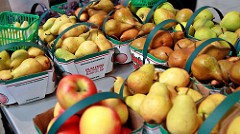Gardening may seem very involved and confusing, but if you put in a little study and a lot of practice, you will soon know your way around. I know San Diego is rarely considered a true “city,” but there are a lot of urban spaces that are crying out for healthy gardens. Fortunately, you have discovered this article. It should provide you with all the help you need to increase your gardening skills and confidence, so that your efforts will yield a fruitful and beautiful city garden.
The Basics are the Basics
Starting a garden which is pest-free is easy, if you have healthy soil. Healthy soil encourages vigorous plant growth and makes your garden more resistant to common diseases and insects. High-quality soil that is low on chemicals is key. It’s the first thing you should think about when planning on growing your garden. Even if you’re buying soil from a store in lieu of what your land has given you, setting up the chemistry right is paramount.


Try using annuals and biennials to add color to your flower beds, and brighten them up. Using a variety of flowers allows your flower garden to have a different look each season. They can make a handy, gap-filler between shrubs and perennials located in sunny areas. Some examples include sunflowers, marigolds, petunias, hollyhocks, and cosmos.
If you’re growing food in an urban landscape, choose high yield crops that are nearly fool proof. Ever wonder why so many people grow tomatoes? Think of tomatoes like a bike with training wheels. Everyone starts out there. You’ll skin a few knees, but once you get the hang of tomatoes, feel free to graduate to more finicky grows.
How to Deal with the Urban Nuances
There are home solutions available to combat the powdery mildew you may find on your plants. A lot of this comes from traffic, airplanes and just urban living. Combine baking soda with a small dollop of liquid soap and add it to water. Once a week, spray this solution on your plants and your mildew should disappear in no time. No damage will occur to your plants, and the baking soda is mild and efficient.
Before actually putting plants into your garden, check the type and compostion of your soil. Have a soil analysis completed so you can know what you need to add to have soil which will fully support your garden. A lot of Cooperative Extension locations offer this service, and you can prevent ruining a few crops by identifying the specific steps to take.
Can’t Stress Pests Enough
When gardening, be watchful of stink bugs, particularly in the fall. They love to inhabit peppers, beans, tomatoes and all kinds of fruit varieties. If left uncontrolled, they can cause substantial damage in your garden, so make plans for how to protect your plants from these pests. I know we say this a lot here, but it is important. A pest infestation, especially in an urban environment where they are especially out of place can really put a damper on a new city garden enthusiast’s enthusiasm.
Try and maintain daily aerated and dried plants. Moisture not only attracts parasites, but also makes it easier for your plants to contract diseases. Fungi is a common problem in the world of plants. To control fungi, use a fungicide spray on the area before you notice any problems.
Most of All, Have Fun


Try growing your peas indoors for the first couple months. Seeds will always germinate much better when you first plant them indoors initially. They will also be healthier and hardier, allowing them to better resist pests and disease. You could transplant the seedlings outdoors once they are able to survive and thrive. Start small. Start green. Have fun.
Hopefully, you can now see that becoming a great gardener is not as difficult as you first feared. There is all kinds of information available to the avid gardener. With a few basic tips, you can get off to a good start on your gardening adventure. Follow our tips to start happily on your way.
